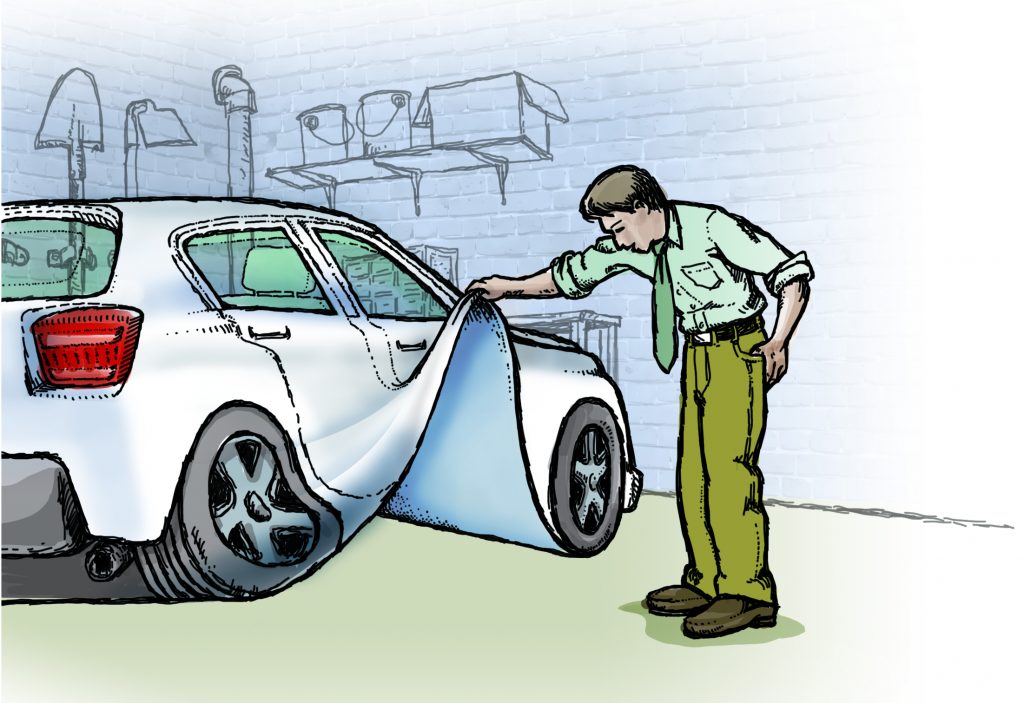Oil Level Is Down, But It’s Not on the Garage Floor?
November 30, 2018
Lower oil levels at oil change time used to be an indicator of either an oil leak outside the car or burning oil inside the engine. Locating an oil leak under the car was a simple affair, and an engine that was burning oil suffered other symptoms, including wear on pistons and rings. There was also a rather suspicious cloud of white sacrificial smoke when starting the car that let folks know something was up.
However, many modern cars now suffer internal oil loss from day one, partly due to the tight tolerances inside the engine while it’s under load. Depending on the make and model, “normal” oil loss between changes can be as much as one quart of oil every 700 miles.
How do you solve the problem?
Loading up vehicles’ trunks with extra quarts of oil to top-off the crankcase at each tank fill-up is not a solution. It’s a band-aid.
When working with your customers on figuring out their mysterious oil loss, you’ve got a lot of bases to cover:
- Why are new cars burning oil?
- What is causing the loss in this particular car?
- Can changing the brand or viscosity of the oil reduce this oil loss?
- Is there anything you as a technician can do to slow the loss of oil?
- Are there driving changes the customer could make to conserve oil?
- At what point does this become harmful to the engine?
Once you know more about oil loss, you can educate vehicle owners about oil loss.
Here are 8 key points:
1. Consider what oil does inside the engine
Oil has many tasks in engines. Yes, lubrication is key, but oil has to do more. Engine oil surrounds and protects the metal components of the engine and seals the rings that are meant to keep oil and gas separated.
Engine oil is enhanced with detergents and corrosion inhibitors that protect the car from dirt and rust. This oil is then pumped and filtered, carrying away contaminants, and most importantly, heat. The filtered oil is then put back to work. Each batch of filtered oil is lower in volume; in some cars, a lot lower.
2. Consider what new cars do to oil
Modern car manufacturers have to jump through a lot of hoops to get a car to market. To get the required fuel economy, engines must generate more power on fewer cylinders. These engine configurations are often constructed of lighter weight metals and alloys, each with their own heat tolerances.
Oil is under more pressure than ever inside modern engines, and if it slips past the piston rings, oil will enter and burn in the wrong part of the engine, fouling plugs and leading to deposit buildup and engine misfire.
3. Piston rings under pressure
Modern efficiencies in engine design include low tension piston rings designed to increase fuel efficiency. However, in some engines, these piston rings can’t handle the high temperatures and pressures inside the engine.
When these rings buckle, gas blows past the piston rings (blow-by), limiting the protective capabilities. The oil also blows past the piston rings into the combustion chamber, clogging fuel injectors.
If you’re finding dirty fuel injectors and low oil levels, it’s time to talk to your customers about fortifying their engine oil to keep it protecting their engines effectively.
4. Thicker oil will not solve the problem
If new cars are coming in a quart low or more, it may be time to suggest a change to synthetic oil. Selling a synthetic oil change can be met with resistance, so you may need to discuss volatility as well as viscosity. Cheap oils are simply more volatile.
Under high temperatures, they break down and evaporate more quickly, leaving more varnish on all of the engine components. Worse, the next time the engine gets hot, there is less working engine oil in the pan to actually do the work needed to keep the engine running.
Changing to a thicker oil is not a good option if the engine is burning oil. Oil is designed to be the proper weight, to be put to work, and to be replaced when it breaks down.
Extremely thick oil won’t protect the engine on start-up and may lead to further damage. It will also cause more oil pressure in the engine, building up friction and generating even more heat as thick oil is not able to migrate into tight tolerances.
5. Conserve oil by driving differently
Your customers can help by changing up their driving styles to reduce heat and load pressure on the engine. Customers driving standard transmission cars would be well-served to keep an eye on their RPMs and getting through the gears quickly for best fuel efficiency and optimum temperature.
Those driving automatic transmissions can give their engines a break by following the rules for gasoline efficiency: avoid flooring the gas pedal when possible and drive gently as the car warms up.
6. Get on a maintenance program
Oil loss between oil changes in a new car may be a recent phenomenon, but it is controllable. You can help your customers monitor the amount of oil loss between changes by discussing driving habits and conditions and review service bulletins from manufacturers.
You can also encourage them to be diligent about oil changes and to keep all of their service records. Unfortunately, a new car that burns oil will become an older car that burns even more oil. Short of an engine rebuild, there are few things you and your customers can do to stop oil burn.
If oil burn only mattered at the tailpipe, the problem would be more manageable. Unfortunately, blow-by can result in fouled plugs, poor engine efficiency, and may even leave your customers stranded due to a failed engine.
If a customer brings you a vehicle that’s chugging along on fewer cylinders because of oil deposits left by burned oil and additives that slipped past the seals, you may need to get them in for a mid-oil-change check. This will give you a chance to check the oil level and locate where in the engine the oil is getting lost.
7. Things are getting better
The only constant in automotive technology is that standards will keep changing. Designers are under ever-increasing pressure to build cars with even better fuel efficiency, and regulations on lubricants will continue to narrow the window on formulating lubricants that will protect the car engine and the environment. Quality synthetic oil will offer your customers the best and most consistent long-term protection for their vehicles.
8. Efficiency can be added back in
Technicians can offer their customers a great deal of relief with products specially formulated to remove deposits from pistons and to clean up the carbon deposits that can form inside new engines.
If oil is disappearing from the engine but isn’t showing up on the garage floor, a thorough clean-out with the new BG Platinum® Fuel System Service can reinvigorate a new engine coated in sticky carbon deposits.
Don’t just give your customer a band-aid. Educate them on what’s actually happening inside their engine. And offer a BG solution with Lifetime BG Protection for their engine and fuel system.
 By Michael Belluomo
By Michael Belluomo
BG Technical Service Manager
30 years of experience in fuel and lube technologies
Updated November 2018. Originally published in the May 2018 issue of National Oil & Lube News Magazine and on NOLN.net.

